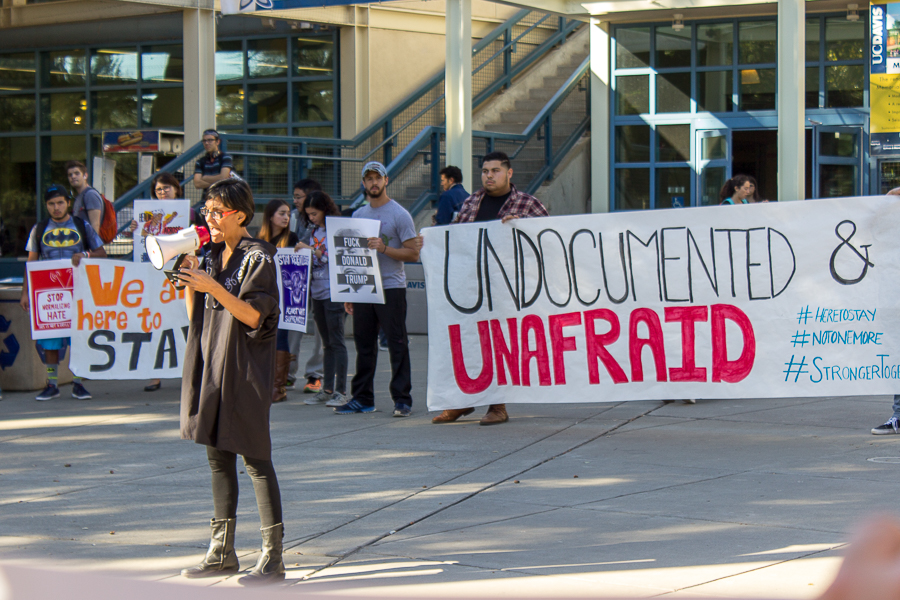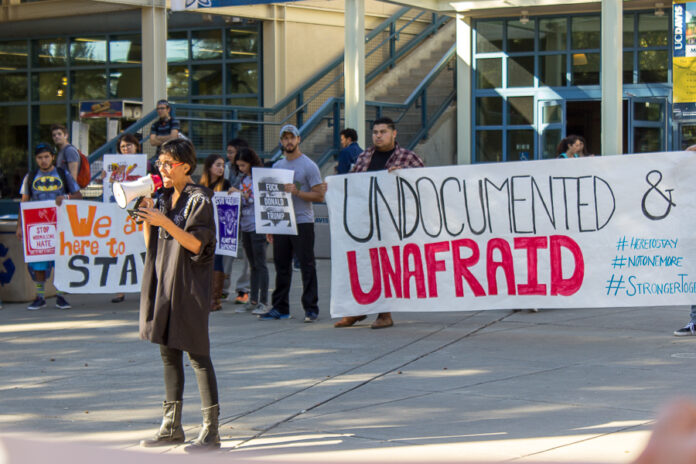
California has highest number of approved DACA applications
The Trump administration announced on Sept. 5 an end to the Deferred Action for Childhood Arrivals (DACA) program, a move that could put nearly 800,000 young adults at risk of deportation in the next six months. The decision has the potential to impact economies across the country: people who received work permits through DACA may have to leave the country if new legislation isn’t put into place by March 5.
In a country known for the spirit of the American dream, DACA’s implementation in 2012 was proof that immigrant children could pursue success in the United States. A national survey conducted in August by the Center for American Progress, a liberal research organization, showed that DACA recipients have stimulated the U.S. economy in a number of ways. The survey reported that 91.4 percent of recipients are employed — a stark contrast to the 60 percent employment-population ratio nationwide. Furthermore, 5.4 percent of recipients have started their own businesses and over 60 percent have opened bank accounts, become credit cards holders or bought cars. Continually, those who are employed with the help of DACA are active taxpayers. Without work permits or jobs, however, these people will no longer be able to support federal or state economies.
Politicians that oppose DACA, including Attorney General Jeff Sessions, often claim that recipients strip job opportunities away from non-immigrants. But in an article published in The Washington Post, David Bier dispels this myth by pointing to the lump of labor fallacy. Researchers historically believed that there was a “lump of labor,” or, in other words, a fixed number of jobs in a given economy. This hypothesis has since become obsolete, as economists now have evidence to prove that employment grows over time even when the labor force is increasing. Moreover, in a poll of top U.S. economists, 95 percent of them agreed that “the average US citizen would be better off if a larger number of highly educated foreign workers were legally allowed to immigrate to the US each year.”
Overall, a rise in the number of workers doesn’t result in higher unemployment in the United States. Rather than taking job opportunities away from domestic workers, the additional 800,000 eligible laborers that have resulted from DACA have improved economic efficiency.
With 222,795 approved DACA applications, California has the highest number of per capita DACA recipients. For this reason, California localities will notice economic changes taking place more strongly here than in any other state. Thousands of California workers may lose job opportunities provided to them by DACA — an issue that will jeopardize the long-term goals of so-called “dreamers” and will cause businesses to incur large employee turnover costs.
Additionally, if immigrants end up having to be deported, the government will have to foot the bill for what it calls the “identification and apprehension of immigration fugitives.” In the 2016 fiscal year alone, this cost added up to $129.4 million, which has the potential to increase if the Trump administration doesn’t act quickly to find a DACA substitute. If a resolution isn’t put into place, the government will become responsible for deporting close to 800,000 people who will be considered illegal after protections under DACA come to an end. Even if not deported, former DACA beneficiaries could lose their work permits, leaving them without labor rights and authorization to work in the United States. This will complicate worker-employee relationships and remove job security previously provided by DACA.
In Yolo County specifically, there are 3,000 immigrants eligible for DACA. Moreover, the UC system has an estimated 4,000 undocumented students. When DACA officially expires in March, these people will no longer be able to apply for the two years of deferred action that DACA has provided. Thus, they won’t contribute their unique expertise and culture to workplaces throughout Yolo County and UC Davis, damaging the diverse climate that makes our local economy and university thrive.
UC President Janet Napolitano, who helped create the DACA program, said in a statement that DACA recipients in the UC system “represent the best of who we are — hard working, resilient and motivated high achievers. To arbitrarily and capriciously end the DACA program, which benefits our country as a whole, is not only unlawful, it is contrary to our national values and bad policy.”
Without DACA, nearly 200,000 California workers may lose the foundations they’ve established in the United States. America was built on the promise of the American dream — of people overcoming obstacles to provide better lives for their families. Ending DACA shatters this narrative for current dreamers. Coming up with an alternative to deferred action will be challenging for the government to achieve in just six months. I remain hopeful, however, that our students and other community members will be allowed to continue residing in the United States, inspiring us with their stories of perseverance.
Written by: Olivia Rockeman — copy@theaggie.org
Disclaimer: The views and opinions expressed by individual columnists belong to the columnists alone and do not necessarily indicate the views and opinions held by The California Aggie.





